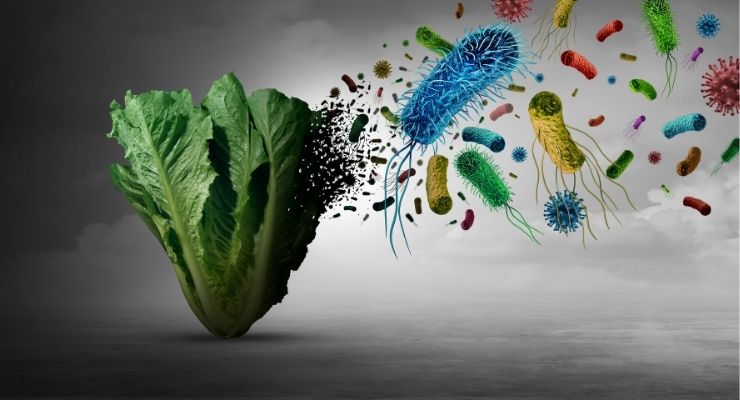
The perils of foodborne illnesses aren’t unfamiliar. Pathogens such as Salmonella, E. coli, and the norovirus are household names. Cyclosporiasis, the infection by the Cyclospora protozoan, is much less familiar but no less serious, causing diarrhea, flu-like symptoms, and weight loss—sometimes for weeks.
Unfortunately, it’s yet another malady that we’ve had to learn about—hopefully not firsthand. Why is this something new? What’s behind the rise of Cyclospora infections from food products? Let’s put that food—and its handling practices—under the microscope.
What Is Cyclospora?
Unlike bacteria, which are prokaryotic, or non-nuclear microorganisms, Cyclospora cayetanensis is a eukaryote—a single-celled organism whose cell has a nucleus. Cyclospora is a protist, part of that so-called junk drawer of living organisms that are neither animal, plant, nor fungus. Other protists that cause disease include the Plasmodium species that travel through mosquito saliva to cause malaria, or the amoeba, which lives in warm water and can cause deadly meningoencephalitis. This protist is also a parasite, relying on your resources and nutrients to live.
How Does It Get Into Our Food?
This daunting question has an easy answer. Like so many other foodborne illnesses, cyclosporiasis occurs after human feces have cross-contaminated food products, usually in the handling process before those products go to market. It’s that simple—when people don’t wash their hands properly, they contaminate our meat, produce, poultry, and other products. Recently, fresh basil and lettuce seem to be the culprits in recent cases of cyclosporiasis, whether due to contaminated water sources or improper handling.
The rise of Cyclospora infections from food products has been hard to ignore this summer, with the Centers for Disease Control identifying over 450 cases as of mid-August, constituting an outbreak several times larger than the usual annual incidence.
How Can We Avoid Cyclosporiasis?
While so much of the food process is out of our hands, there are steps you can take at home to limit the possibility of a Cyclospora infection. Prevention begins, as it should, with conscientious handwashing.
Additionally, you should wash any surfaces and utensils after preparing one kind of food—once you cut the meat, wash everything down before you start chopping vegetables. When you do prepare meat and poultry, cook it fully—Cyclospora can’t handle high heat. These steps should help you keep this harmful microorganism at bay.



